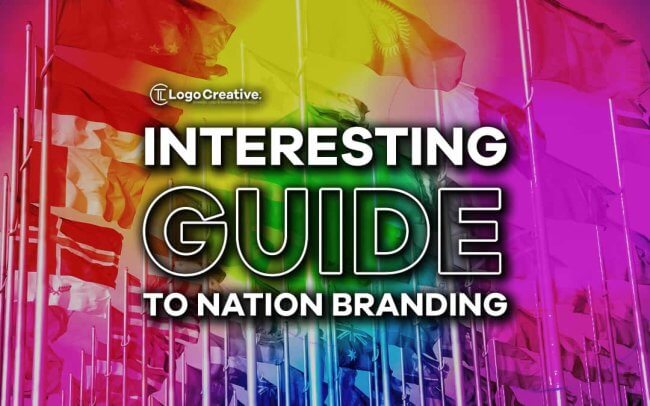Every nation care’s about its image and competitive identity. How the world perceives a nation is becoming increasingly important, especially in the 21st Century. In this article we share An Interesting Guide to Nation Branding.
The Council on Foreign Relations defines nation branding as applying corporate branding techniques to countries. It is the image and reputation of a state on the international stage and the condensed expression of the peak performance of a nation. It is more detailed than the usual country-of-origin tag and covers political, economic, and cultural dimensions.
The approach to nation branding needs to be holistic and specific to serve the nation’s goals and each sector within it.
This article will guide you through the aspects to consider when you begin your nation branding journey.
Table of Contents
1. Brand Building for Corporate Endorsement
It is common knowledge that branding influences consumers’ buying behavior. Locations and corporations use nation brand associations to leverage the country’s brand image in their industry. When used by corporate brands, nation branding not only adds to the esteem of the product but also furthers the nation’s reputation internationally.
For example, Emirates is Dubai’s national airline and leverages well on the country’s image, culture and values to market its services. The airline also acts as the nation’s representative on a global scale. It has become a means through which prospective tourists experience the country way before setting foot on its soil.

One thing you probably didn’t know about branding is that it represents your identity and reputation as a nation. Brand your nation in such a way that you play to its strengths. Stand for values that encourage endorsement and buy-in from crucial corporates who can leverage the nation’s brand. They can further build value for the country by marketing and endorsing its culture, people, and values.
2. Location Branding
According to Palgrave Macmillan, location or place branding is the practice of applying brand strategy and other techniques to the economic, social, political, and cultural development of cities. A strong place brand helps a location compete favorably in the global market.
Articulating and differentiating the unique characteristics of a location is key to attracting investment, people, and capital to that place.
This field is growing so fast that companies like Bloom Consulting are choosing to focus on city, location, and nation branding projects. They were selected in 2022 to work on South Africa’s national brand.
A well-articulated location brand should help a country better understand the industries and investments it is trying to attract.
Costa Rica has had massive success in destination or place branding. The newspaper The Costa Rica Star quotes that its trademark “Essential Costa Rica” was created to embody the country’s people and unique geography. They chose green for the text to show the importance of nature conservation to Costa Rica.

Start by analysing the current brand associated with the location of interest and see what needs improvement. Secondly, develop a shared vision, mission, and objectives for creating the new location brand. Then create a fresh image, launch it and monitor its success over time. Always create the location brand with the future in mind to avoid constant rebranding over short periods.
Consider renting an already established website to gain SEO traction in a short time. It will help you skip the waiting period, get your new national image out there and rank a place at the top of search engine result pages.
Take time to package your brand presentation message in a way that is memorable and resonates with who you are as a country. A location brand is a tool for the present and the future. It reflects what a country currently is and inspires what it can be in the future.
3. Political Perspectives of Branding
There are many logics of nation branding. Political logic is one. It is seen as coordinated government efforts to manage a country’s image in public spheres. Political branding also promotes foreign relations and attracts investors, among other benefits.
It is a powerful tool, especially for small, developing countries eager to strengthen their political position. These countries seek to take a piece of the cake and compete with other states’ military and financial power. For developed nations, nation branding is used to assert dominance in certain aspects of global politics.
A great example of this process in action is the US. It brands itself as the greatest democracy on the planet and incorporates that image into government agencies and websites. Leaders speak of this national image, and media outlets propagate it until it resonates worldwide. America gets a front-row seat in most global deliberations concerning democracy and medical diplomacy.
From a political perspective, nation branding is used to manage a country’s reputation and maintain its hegemony over other nations in foreign affairs.
4. Cultural Perspectives of Branding
Nation branding builds and manages a country’s reputation by promoting its culture, history, and heritage. All forms of branding shape social relations, and nation branding is no exception. It is seen from a cultural perspective as a way of reconstructing nations through ideologies and practices or daily lives.

For example, Nigeria is well known for its headdress. The gele is an iconic headdress for women used on special occasions like traditional weddings. It was branded to represent the nation’s culture on the global market.
This must, however, be approached with caution to avoid people’s personal tastes dictating the nation’s brand. It will rob the nation of its true identity and make nation branding counterproductive. Ultimately, nation branding focuses on its implications for national identities, social power relations, and agenda-setting.
5. Economic Perspectives of Branding
We have established that nation branding is a strategic tool to boost a country’s competitive advantage and dominance in the market. Experts at Venture Smarter advice that staying ahead of the competition in the corporate world requires tried and tested business strategies. The same applies to nation branding.
Countries always attempt to attract foreign investors in the branding process. That is done by showing how worthy and profitable it will be for them to invest in that country.
The economic perspective of national branding is based on three basic assumptions:
- A parallel between nations and brands is necessary.
- The global market is competitive, and there is competition among countries.
- National well-being is ensured by securing a competitive economic advantage. That’s assuming that nation branding is to attract foreign investments, tourists, human capital, or trade.
For instance, German automobiles have a largely positive international image. From BMW and Audi to Volkswagen and Mercedes Benz, German cars enjoy a great perception in most countries. This positive perception toward a specific category of products creates a massive global market for the European country and its vehicles.

The economic perspective reveals nation branding as a tool for enhancing economic growth for a country or state.
6. Key Areas of Focus
The Nation Brand Impact Framework from Brand Finance identifies four key areas your nation’s branding efforts should target.
Investment (Domestic and Inward)
Your nation’s brand must encourage local businesses to invest primarily domestically and not overseas. Aim to encourage Foreign Direct Investment such as business relocation to the country. Ensure the national image you develop represents characteristics that make the nation a desirable place to do business.
Talent (Domestic and International)
To avoid brain drain, your nation branding needs to encourage students to study and work locally rather than overseas. The nation’s image should also attract international students and skilled workers to study and work in your country. That will add to your competitive edge as a country while boosting your economy.
Goods and Services (Domestic and Exports)
Products and services produced by the nation should be promoted locally and internationally. In the same breath, the national image should encourage increased consumption of local products. The aim is to increase exports and reduce imports.
Tourism (Domestic and Foreign)
Make sure to have nation branding campaigns that promote local destinations to both local and international tourists. Encouraging domestic travel adds to the foreign exchange gained by the country from foreign tourists.

For example, recently, Kenya launched campaigns dubbed “Tembea Kenya” and “Zuru Kenya.” Swahili words for “Visit Kenya” and “Tour Kenya.” The former encouraged foreign tourists to visit and experience the country’s savannahs, wildlife, beaches, forests, and mountains. The latter aimed to encourage local tourists to go out and experience their own country. It was a successful campaign, boosting local tourism by 171% in 2020.
In Closing
Nation branding is a growing concept in today’s competitive world. Countries are expressing their unique culture, heritage, history, geography, and values to the world to have an edge on the competitive global landscape.
A nation’s image should be well articulated to encourage corporates to use it to endorse the country to their global markets. Location branding can also be helpful. That is where a country uses its most iconic destination to communicate its culture and values to foreign countries.
Nation branding can be used to assert political dominance. It is also used to shape social relations from a cultural perspective and attract foreign investors from an economic perspective. Be keen to consider investment, talent acquisition, goods and services, and tourism when developing your nation’s brand.
With this in mind, you are all set to create and implement a compelling and memorable national image.
Join The Logo Community
We hope An Interesting Guide to Nation Branding has been helpful. If you would like more personal tips, advice, insights, and access to our community threads and other goodies, join me in our community. You can comment directly on posts and have a discussion.
*TIP – We use and recommend DesignCuts for all your fonts, mockups and design bundles.
 Authors Bio
Authors Bio
Jon is the founder of two successful e-commerce and SaaS businesses. He’s passionate about sharing what he has learned from working with business owners through Venture Smarter.


